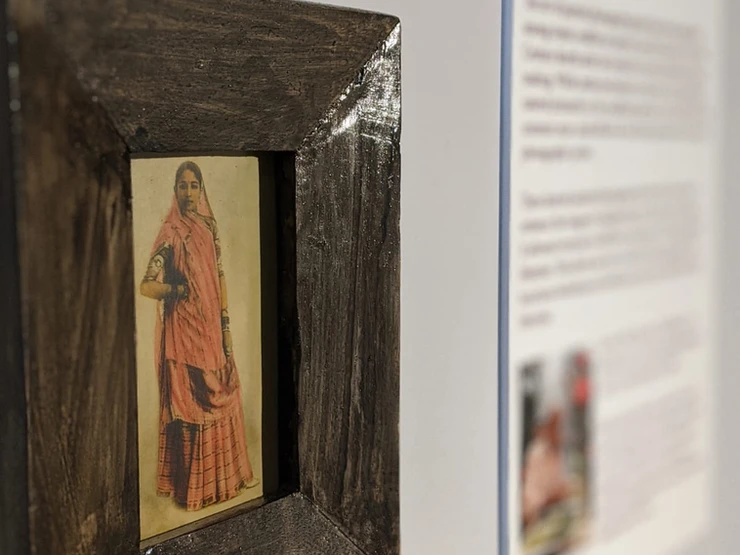
Ever since the early days of the invention of Photography, attempts have been made to warm up the black and white image using pastel colours. Switzerland is considered as the birthplace of hand-tinted daguerreotype by Johann Baptist Isenring, who for the first time coloured the image with a mixture of gum arabic and pigments. The Western photographers rejected the idea of painted photography as for them it meant their images were not good enough if it had to be altered with paints. But this idea became really popular in India in fact the Indian artists took the practice of painted photographs to another level.
Photography was welcomed in India with great enthusiasm. But as for India's colourful culture the black and white images appeared to be lifeless and so the painted photography emerged as a trend mainly in the Western parts of India, with the practice of hand painting the artist added a life to the photographs.The unique process embodied the unity of a new medium of photography and the age old tradition of painting. This was possible because of the earlier existing miniature painting technique which allowed the artist to intricately paint the photographs. The miniature painters who had lost their livelihoods due the emergence of photography soon found work in the studios as colourists.The photographic studios set up their own karkhanas for the artists to work upon the images.
The process involved six different skills- retouching, in which the artist smoothed the photograph by minimising dark areas, finishing done with crayon and charcoal to soften harsh light, background was added as per the choice of the patron or the artist , another artist outlined the figures for silhouetting, the last two steps were painting enlarged oil portraits and colouring the photograph again. The process did not involve only one artist, instead,required different artists for different skills. They also had the liberty to be creative with backgrounds. Many times they would alter it entirely, changing it into some outdoor scene or decorated halls. It also allowed them to alter the subject as well, for example the image of Maharaja Bhupal Singh of Udaipur who was paralyzed waist down but is shown standing with a sword and a shield. The demand for painted photographs increased which made the artist’s job dreary.
To tackle this situation they started working with already painted backdrops that were placed behind the subject in the studio, now all they had to do was colour the images. Over time watercolours replaced the gouache and oil paints because the tint and shadow they gave to the images made them look more appealing and realistic. The art of painted photography gained immense popularity in the 19th century among royals, wealthy art patrons and especially among the masses because for the first time they could afford to have their portraits in the form of photographic prints. It also allowed the royals to showcase their clothings, photography showed the clothes realistically and the paints enhanced the look with the addition of ornamentation and embroidery.
The account of painted photographs of India can be found in Hendley’s ‘The Rulers of India and the Chief of Rajputana’ which mentions the work of Pannalal Parasram Gaud the only artist ever whose name got accredited on the photographic images. Another early publication which featured painted photography is James Forbes Watson’s ‘ Textiles Manufacturers and Costumes of the People of India’. Painted photography was an ingenious blend of photography and art and while this artistry ceases to exist commercially today, but it is still practiced by few individual artists. Museo camera has a curated exhibition showcasing the collection of painted photographs, by one of those few independent artists.